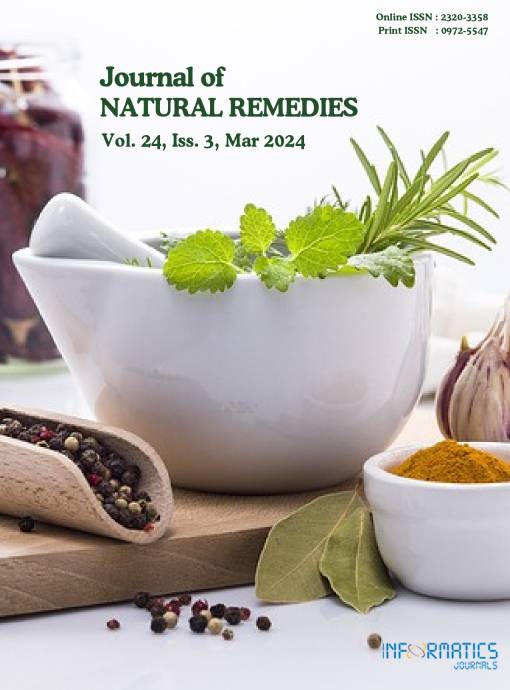An In Vitro Comparative Study of Antibacterial Activity of Calendula officinalis Mother Tincture and 30 Potency
DOI:
https://doi.org/10.18311/jnr/2024/35593Keywords:
Antibacterial, Calendula officinalis, Centesimal Scale, Minimum Inhibitory Concentration, Mother Tincture, Zone of InhibitionAbstract
In this research work, the antibacterial activity of Calendula officinalis was tested (in vitro) as opposed to the commonly encountered important bacterial strains, namely Staphylococcus aureus and Pseudomonas aeruginosa. For this research, the mother tincture and 30 potency of Calendula officinalis were used. The mother tincture and further potencies (in centesimal scale) were prepared with the help of absolute alcohol (99.6% v/v) following the guidelines given in the Homoeopathic Pharmacopoeia of India (HPI). The Minimum Inhibitory Concentration (MIC) was studied using the micro-broth dilution method, and the Zone of Inhibition (ZOI) was studied using the agar-well diffusion method. The results of the MIC and ZOI were then compared with Amoxicillin, which was used as the standard and finally the conclusions were drawn. The selected microorganisms were procured from the National Centre for Microbial Resources, Pune.
Downloads
Metrics
Downloads
Published
How to Cite
License
Copyright (c) 2024 Amol Pathak Amol, Kamlesh. B. Shah, Gunosindhu Chakraborthy, Janki Patel (Author)

This work is licensed under a Creative Commons Attribution 4.0 International License.
Accepted 2024-02-05
Published 2024-03-27
References
Mandal and Mandal. Textbook of Homoeopathic Pharmacy, New Central Book Agency (P) Ltd. 2012.
Butnariu and Coradini. Evaluation of biologically active compounds from Calendula officinalis flowers using spectrophotometry. Chemistry Central Journal. 2012; 6:35. https://doi.org/10.1186/1752-153X-6-35 PMid:22540963 PMCid: PMC3379952.
Kishimoto S, Maoka T, Sumitomo K, Ohmiya A. Analysis of carotenoid composition in petals of calendula (Calendula officinalis L). Bioscience, Biotechnology and Biochemistry. 2005; 69(11):2122-28. https://doi.org/10.1271/bbb.69.2122 PMid:16306694.
Ukiya M, Akihisa T, Yasukawa K, Tokuda H, Suzuki T, Kimura Y. Anti-inflammatory, anti-tumor-promoting and cytotoxic activities of constituents of marigold (Calendula officinalis) flowers. Journal of Natural Products. 2006; 69(12):1692-96. https://doi.org/10.1021/np068016b PMid: 17190444.
Zitterl-Eglseer K, Sosa S, Jurenitsch J, Schubert-Zsilavecz M, Della Loggia R, Tubaro A, Franz C. Anti-oedematous activities of the main triterpendiol esters of marigold (Calendula officinalis L). Journal of Ethnopharmacology. 1997; 57(2):139-44. https://doi.org/10.1016/S0378-8741(97)00061-5 PMid:9254116.
Behboud Jafari, Changhiz Ahmadizadeh. The in vitro study of the antimicrobial effect of marigold (Calendula officinalis) extract on infectious microorganisms. Electronic Journal of Biology. 2017; 13(4):348-52. https://ejbio.imedpub.com/the-in-vitro-study-of-antimicrobial-effectof-marigoldcalendula-officinalis-extract-on-infectiousmicroorganisms.pdf

 Amol Pramodrao Pathak
Amol Pramodrao Pathak









 0.35
0.35 24
24 0.161
0.161